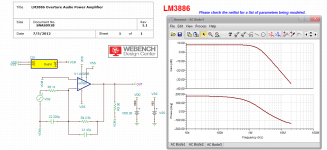while playing on stage they are likely using In Ear Monitors to get good isolation, attenuation
these typically have ridiculous high sensitivity, 200mV is sufficient to drive some to 120 dB SPL
a buffer followed by a step down transformer really is the only properly "gain structured" system for these even with consumer line out, much less pro audio line levels
most of the time you could skip the buffer, just use the step down transformer
these typically have ridiculous high sensitivity, 200mV is sufficient to drive some to 120 dB SPL
a buffer followed by a step down transformer really is the only properly "gain structured" system for these even with consumer line out, much less pro audio line levels
most of the time you could skip the buffer, just use the step down transformer
^Good point (as usual).
I wouldn't, however, entirely agree that:
I wouldn't, however, entirely agree that:
You can always (passively) attenuate and then use a buffer, too. Like the O2 does it (gain stage --> volume control --> buffer), which happens to be one of the lowest-noise headphone amps around. (Unsurprisingly, the preferred gain for IEMs is 1X. Something with a balanced input best implement some negative gain in the input stage.) And those NJM4556As in there aren't even super-duper low noise. Noise requirements on stage aren't quite as strict anyway.a buffer followed by a step down transformer really is the only properly "gain structured" system for these even with consumer line out, much less pro audio line levels
most of the time you could skip the buffer, just use the step down transformer
- Status
- Not open for further replies.
